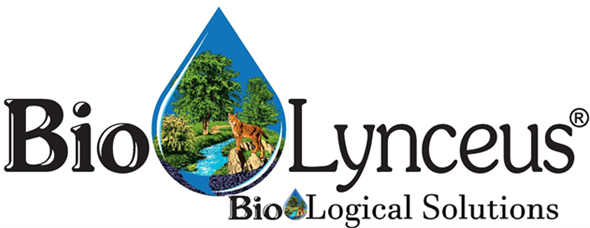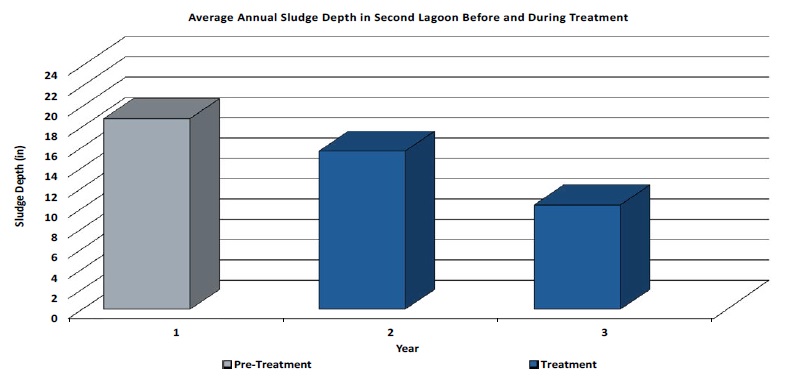Lagoon System 0.01 MGD
Municipalities using lagoon systems for wastewater treatment are often challenged with accumulating solids in their treatment ponds. Municipal wastewater carries high organic substrate loads that can inhibit proper wastewater processing. Bioaugmentation is an effective solution to increase solids degradation in lagoon systems.
Supplying a system with external cultures of heterotrophic wastewater bacteria can increase biomass and solids degradation correspondingly.1 The following paragraphs outline the use of ProBiotic Scrubber® II (PBII) to augment a lagoon system
with excessive solids buildups.
A small Wyoming municipality of 300 residents was having issues with accumulated solids in their lagoon system. The 0.01 MGD, three-pond wastewater treatment process was receiving high organic loads that were not digested well by the resident microbiology. There was no headworks set in place to remove solids from the wastewater prior to reaching the lagoons.
Furthermore, the solids that accumulated in the ponds reduced the wastewater holding capacity of the system.
Bioaugmentation was suggested for the wastewater system to reduce dredging costs and improve solids degradation. The management contacted BioLynceus® for live bacterial cultures to augment their lagoons. PBII, a diverse consortia of wastewater bacteria, was implemented in the collection system to improve solids treatment.
Daily doses of PBII were drip fed into the system through a drain in the city hall basement, well ahead of the lagoon system. Over two years of treatment, solids were degraded in both ponds one and two. The sludge in the first lagoon was bio-dredged by an average of four inches in that time.
Over the first year of treatment, sludge profiling of lagoon two revealed a three-inch average decrease in sludge depth. This pond was the most impacted by accumulated solids. The next year, the sludge depth was reduced by an additional five inches.
Figure 2. Average annual sludge depth in the second lagoon the year before treatment and two years during treatment. Average depths were calculated from point measurements collected during sludge profiling.
The density and appearance of the solids changed in both lagoons one and two. During PBII treatment, the sludge was fluffier and shifted from a black to lighter brown color.
This indicated better microbial digestion of the sludge. With greater space between solids particles, the wastewater bacteria more rapidly degraded the accumulated sludge.
Bioaugmentation helped improve the treatment capacity of the system without the cost of mechanical dredging. While applying PBII, solids in the lagoons were not manually
removed. Based on third party calculations, the estimated cost to dredge both cells prior to treatment was $137,936.
This cost estimate was reduced to $74,576 at the end of two years of treatment. The cost savings associated with the solids reduction was over $63,000. Over two years, the
town spend approximately $7,000 on product. The return on investment of the treatment was monumental, so the town continued to bio-dredge their system with BioLynceus® product.
Overall, adding PBII helped degrade the accumulated solids in the lagoon system, so the holding capacity was increased. Additionally, the treatment helped the town avoid dredging costs.
BioLynceus® ProBiotic Scrubber® II helps reduce accumulated solids in lagoons.
1 Gerardi, M. (2016). Wastewater Bioaugmentation and Biostimulation. Lancaster, Pennsylvania: DEStech Publications, Inc. Pp.117.

